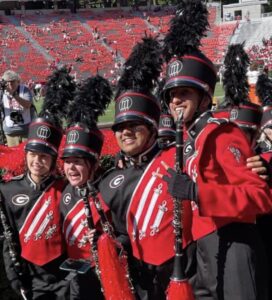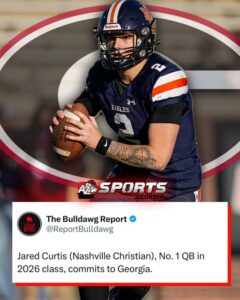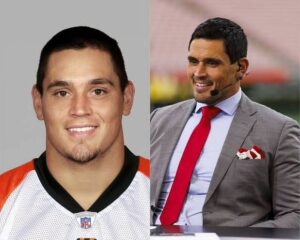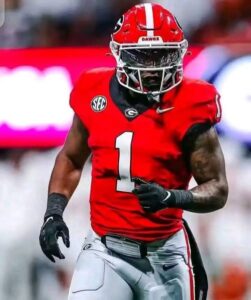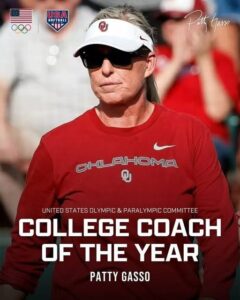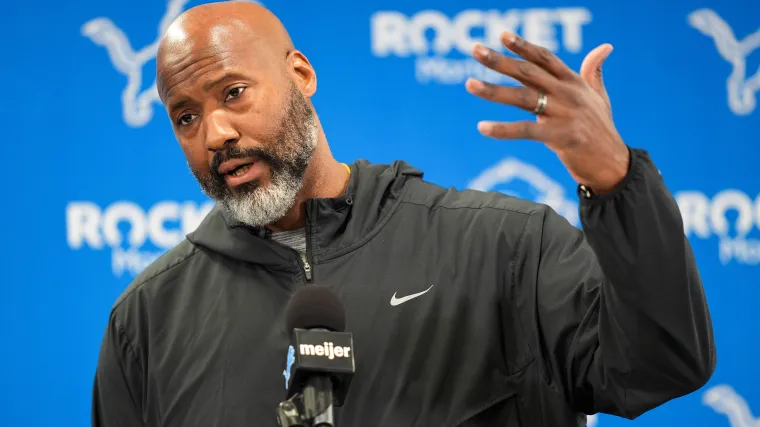
It’s strange that Detroit Lions general manager Brad Holmes has delayed selecting an edge rusher, even though this may be a component of a more intricate trade plan.
The Detroit Lions, a team long in search of consistent success, have made significant strides under the leadership of general manager Brad Holmes. Since taking the reins in 2021, Holmes has helped guide the team through a rebuilding phase with a vision for long-term competitiveness. One glaring need that still remains is a dominant edge rusher to bolster their defensive line, a role that has been identified as crucial for the team’s success. Yet, despite this clear need, Holmes has been surprisingly patient, delaying the selection of an edge rusher in recent drafts.
This strategic delay raises a few questions. Is this a reflection of a more intricate, behind-the-scenes trade plan? Or is it an intentional part of a larger draft strategy? It’s certainly possible that Holmes is biding his time, carefully orchestrating a future trade to acquire the right piece when the time is optimal. In the unpredictable world of the NFL, such patience may very well prove to be a shrewd maneuver, one that maximizes the team’s chances of not just filling gaps, but of finding the perfect fit for their defensive scheme.
An edge rusher is a player tasked with pressuring the quarterback, typically by rushing from the outside of the defensive line. The success of an edge rusher is pivotal to a defense’s ability to disrupt offensive plays, particularly passing attacks. In a league where passing is king, a team without a legitimate edge rusher is often left scrambling, trying to manufacture pressure through blitzes or schematic schemes. The Lions have struggled for years to find a consistent pass-rushing threat.
In 2023, the Lions had some success with their defensive line, particularly with the development of players like Aidan Hutchinson, who was selected with the second overall pick in 2022. Hutchinson showed flashes of brilliance, but the lack of a complementary edge rusher meant that opposing offenses could key in on him, limiting his effectiveness. The Lions’ pass rush, as a whole, ranked in the middle of the pack for most of the season. This highlighted the need for a true second edge rusher to free up Hutchinson and create more opportunities to pressure the quarterback.
Brad Holmes, as a former scout, is acutely aware of the importance of an edge rusher, and his decision to delay selecting one could be indicative of a larger plan. Whether this involves waiting for a more favorable opportunity in the draft or exploring trade options, Holmes is keen on building a well-rounded team that doesn’t overpay for a quick fix.
Holmes’ drafting history paints a picture of a general manager who is methodical, patient, and focused on long-term value. He has made it clear that he values building through the draft, making prudent picks that fit the team’s needs while also considering the broader team dynamic. In his first few drafts, Holmes has focused on key positions like wide receiver, defensive line, and offensive line.
In particular, Holmes has shown a willingness to invest in the trenches. The Lions have consistently bolstered both their offensive and defensive lines, signaling a recognition of the value of building from the inside out. This approach has allowed the Lions to remain competitive while also developing young talent who can contribute immediately.
Holmes has been selective with the players he targets, often prioritizing character and scheme fit over raw talent alone. His philosophy revolves around finding the right players who can fit the culture and vision of the team. In that context, his delay in selecting an edge rusher may not be a sign of oversight, but rather part of his careful and deliberate planning.
Looking toward the future, the 2025 NFL draft offers some compelling possibilities for edge rushers. This class, widely regarded as one of the deepest for pass-rushing talent, might offer Holmes the chance to select a more refined, ready-to-play rusher compared to earlier drafts.
The Lions might see this as an opportunity to wait for a more immediate and impactful edge rusher who fits perfectly with their defense’s needs. By delaying the position, Holmes could be positioning the team to acquire a player with more upside or one who better fits their defensive system. It’s possible that Holmes is also aware of upcoming trade scenarios that could influence the team’s decision-making, enabling them to acquire a top-tier edge rusher without using a high draft pick.
In the NFL, trades are as much a part of the strategy as the draft itself. General managers often look ahead to the possibility of acquiring players through trades rather than filling all gaps in the draft. A delayed pick might signal that Holmes is preparing to move up in the draft or trade for a veteran edge rusher, someone who has proven production and can immediately impact the team.
This strategic trade plan could include leveraging the team’s draft capital or young players to acquire a proven edge rusher. Trades often offer more immediate returns than the draft, where players may need to develop before becoming full-time contributors. Holmes could also be keeping an eye on trade possibilities in the middle of the season, when teams are more likely to deal veterans who have underperformed or are in need of a change of scenery.
Under head coach Dan Campbell, the Lions have emphasized a hard-nosed, aggressive style of defense that values physicality and pressure. However, Campbell’s scheme also requires versatility. The Lions are looking for edge rushers who are not just good pass rushers but also capable of defending the run and fitting into multiple defensive fronts.
In this context, Holmes may be delaying the selection of an edge rusher until he finds someone who fits his defensive vision. A versatile, multi-dimensional player may be more valuable than a one-dimensional pass rusher, especially if the Lions are looking to be competitive in both run defense and pass rushing.
As for trade scenarios, there are several possibilities that could see the Lions acquiring a veteran edge rusher. Teams with aging or disgruntled pass rushers, or teams in rebuild mode, may be willing to move on from established players for the right price. Holmes could target such players in a trade, rather than using a high draft pick on a potential project.
The Lions have already shown an openness to making bold moves, such as acquiring wide receiver Jameson Williams and trading up for Hutchinson. Given the right trade scenario, they may opt to bring in a veteran edge rusher who can step in immediately and provide the pass rush the team desperately needs.
Waiting for the perfect edge rusher through the draft or trade carries both risk and reward. On the one hand, the Lions risk entering the season with a defensive line that may still be vulnerable to opposing quarterbacks. On the other hand, Holmes has shown a keen eye for talent and may be positioning himself to make a high-impact trade when the timing is right.
In conclusion, Brad Holmes’ decision to delay selecting an edge rusher is likely part of a broader, strategic vision. Whether it’s a calculated draft decision, a trade plan, or a combination of both, Holmes is building a team with the future in mind. Fans may be eager to see immediate improvements, but Holmes’ approach to team building prioritizes long-term success, even if it means waiting a little longer to secure that elusive edge rusher. The coming seasons will reveal whether this patience pays off, but if Holmes’ past decisions are any indication, his patience will ultimately serve the Lions well.

